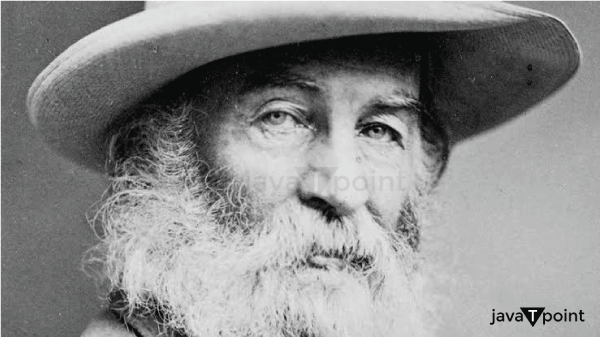A Noiseless Patient Spider Summary"A Noiseless Patient Spider" by Walt Whitman is an interesting short poem. It first appeared in stanza 3 of his work, "Whispers of Heavenly Death," published in issue 10 of The Broadway, A London Magazine in October 1868. It was renamed "A Noiseless Patient Spider" and appeared as part of a large cluster in Passage to India (1871). Later, Whitman's "Leaves of Grass" poem was published in a collection. Because of its theme human soul relating to the universe, the Poem has inspired numerous poets and musical compositions. 
Whitman introduces us to the spider in the Poem's introduction by portraying it as noiseless and patient. The spider represents the human soul's search for connections. Whitman makes readers consider their journeys for meaning and connection through the spider's tireless attempts. About the AuthorWalter Whitman Jr. (May 31, 1819 - March 26, 1892) was an essayist, poet, and journalist from the United States. He is widely recognized as one of the most essential poets in America. Whitman's poems were a mix of transcendentalism and realism, and he is often known as the father of free verse. His poems were controversial then, especially his 1855 poetry collection "Leaves of Grass," which some saw as obscene due to its overt sensuality. Whitman grew up in Huntington, Long Island, and spent most of his youth and professional life in Brooklyn. When he was eleven, he stopped attending school to start working. He has worked as a journalist, a teacher, and even as a government clerk in the past. 
Whitman's excellent poetry collection "Leaves of Grass" was published with his money in 1855 and became well-known. Whitman continued and expanded "Leaves of Grass" until he died in 1892. During the American Civil War, he moved to Washington, D.C., and worked in hospitals for caring the injured. His poems typically dealt with loss as well as healing. Whitman responded to Abraham Lincoln's assassination with two poems, "O Captain! My Captain!" along with "When Lilacs Last in the Dooryard Bloom'd," and a series of lectures on Lincoln. Whitman moved to Camden, New Jersey, after suffering a stroke near the final stage of his life and with his constant weakening of health. When he passed away at 72, the funeral was done in public. Whitman's impact on poetry can still be felt today. "You cannot understand America without Walt Whitman, without Leaves of Grass," art historian Mary Berenson wrote. Summary of A Noiseless Patient SpiderStanza -1The speaker shows a spider. It's all alone and quiet. It is not creating any noise as it sits alone on a small peninsula. The speaker notices it is gazing for more exploration in its surroundings. When it notices the empty spaces, it begins spewing filament after filament from its inside and unreeling them. It moves at tremendous speed. It works nonstop. 
The stanza depicts the speaker's minute and in-depth observation of the spider, how it selects a home, weaves, and works for its web. On the other hand, this stanza implies the central theme of an individual's role in the environment. Stanza 2The speaker represents his soul. In a direct address to his soul, he asks where the soul is and receives the response that it is unattached but surrounded by "measureless oceans of space." He claims that just like a spider, it also collects, analyses, synthesizes, and throws away information to connect with its surroundings. It creates bridges that connect to the rest of the world by anchoring somewhere near the brinks. It flings a gossamer-like thread to form a connection somewhere, but the soul's effort to make connections always continues. The comparison of the spider to the soul provides the readers with a thorough knowledge of the significant issue of individuality, the universe, and their relationship. This stanza completes with the basic theme of induvial and the cosmos and their interconnection. Elements of A Noiseless Patient Spider"A Noiseless Patient Spider" look into isolation, connection, the human condition, perseverance, and resilience. It explores existential and metaphysical topics and uses metaphor to convey deeper meanings. These themes combine to form a deep and reflective study of the human experience by challenging readers to consider their search for meaning, connection, and self-discovery in a large and complex world.
Critical Analysis of A Noiseless Patient SpiderThe Poem can be read in a variety of ways by implying a variety of interpretations. However, this is different from what distinguishes this poetry. This Poem is distinguished by its overlapping layers and literary devices. The Poem is both a description of a brief period in the life of a spider and the poet's philosophical journey. Spider spinning a web atop a cliff or promontory is considered natural. Stanza one is entirely immersed in nature, with an organic existence. The organic, natural world is reflected in the spider. However, In the second stanza, the poet raises the Poem to a higher plane, to the imaginative domain. The poet uses the picture of the spider to represent his own soul's meditations and desires. The Poem enters the realm of the soul when the author begins an examination of his philosophical speculations. As soon as he connects the picture of the spider to his soul, he is forced to think about the meaning of life. 
Walt Whitman addresses one of humanity's most pressing issues: human spiritual destiny. The Poem then becomes a maze-like search for the unknown answer. The double metaphor utilized in the Poem is noteworthy. The spider represents the poet's soul, while the spider's threads represent the poet's spiritual explorations. The metaphor is carried to the text. The spider web is also a metaphor for the whole Poem. The Poem takes the form of a web. The only method to figure out what Whitman is talking about is by his hints and clues. It is unclear to us what he intended to accomplish with this poetry, just as it is unclear to us what his soul intends to accomplish in his search for answers. And every point will be a spherical thread that leads us back to a single point in the web, i.e., the purpose of life. This peninsula is the home of the spider, the poet (or his soul), and the Poem. Whitman oscillates between levels as he grapples with his spiritual questions. The Poem becomes an emotional lyric describing a spiritual dilemma for the readers. Analysis of Literary Devices in "A Noiseless Patient Spider"The literary devices in "A Noiseless Patient Spider" allow writers to enhance essential texts' varied meanings. Their proper application adds richness and individuality to the text. In this Poem, Walt Whitman also employed literary tricks to portray the state of his soul. The following is an analysis of the literary devices used in this Poem.
Tone of the PoemThe poem's tone is meditative at first, but as it progresses to the second and last stanza, its meditative tone becomes sincerity. The poet notices the spider and closely observes its actions. As a result, the tone is meditative. However, in the next stanza, as he begins to connect the picture of the spider to his soul, he assumes a sincere tone. When his thoughts move to himself, his reflections become more urgent, and therefore the tone becomes deeper. Central Idea of A Noiseless Patient SpiderThe central theme of this Poem is the vastness and brevity of life. On the one hand, life is a vast ocean of experiences and opportunities. But it is brief, unpredictable, and abrupt as the poet's train of thought bounces between these essential qualities. This Poem discusses how life is more than everyday rituals and a spiritual journey toward a more meaningful and rewarding life. 
The Poem also reminds us that while life is full of possibilities as it is short. And this is a subconscious concept that waves the poet. Hence, he uses the words speeding and 'ceaselessly' to depict a natural haste to complete the task before time runs out. Theme of A Noiseless Patient SpiderThe Poem's concentrated theme is isolation. Although there are related themes, such as exploration and spiritualism, Whitman emphasizes the sense of loneliness. The spider and the Poem's addressee are shown as solitary beings against a stark and expansive landscape. Whitman may have intentionally utilized the imagery of the immense nothingness around them to create a sensation of utter solitude. For example, 'isolated,' 'empty,' and 'separated' evoke loneliness. It is unclear if he considers his alone to be positive or negative. However, his emphasis on this component gives us the impression that solitude is required to reach one's philosophical and spiritual goals. The speaker uses the spider's movements to metaphorize his search for meaning and connection. The Poem emphasizes that the speaker is like the patient spider and will continue to hunt and strive despite uncertainty and being alone. Overall, "A Noiseless Patient Spider" sends a strong message about the human condition and the universal desire for connection and purpose. It emphasizes the perseverance required to negotiate the expanse of existence and the continual search for meaning in the universe. ConclusionThe second word surrounded in the line, 'Surrounded, surrounded, amid measureless oceans of space,' was substituted with 'detached' in the Leaves of Grass version of the Poem. This emphasizes the Poem's main topic of loneliness. Finally, it is a lyric poem with powerful imagery. The Poem might be taken as a dying man's rage or as a vision of a young explorer. It is both uplifting as well inducing pathos. Finally, the Poem pulls together two crucial qualities of life, its vastness, and its brevity.
Next TopicA Passage to India Summary
|
 For Videos Join Our Youtube Channel: Join Now
For Videos Join Our Youtube Channel: Join Now
Feedback
- Send your Feedback to [email protected]
Help Others, Please Share









